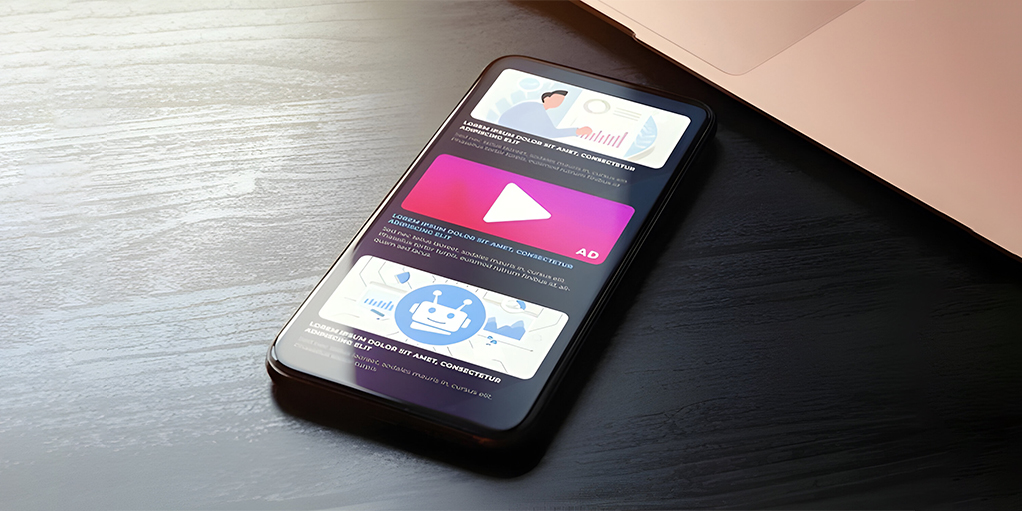Introduction
The digital advertising landscape has evolved dramatically, with programmatic ads leading the charge. Programmatic advertising automates the buying and selling of ad space, allowing for precise targeting and real-time optimization. However, to make the most of your programmatic ad campaigns, choosing the right ad format that aligns with your specific marketing goals is crucial. This blog will guide you through selecting the appropriate programmatic ad formats to achieve your objectives effectively.
Understanding Programmatic Advertising
Programmatic advertising uses algorithms and data to purchase ad space in real time, targeting specific audiences based on demographics, behavior, and other factors. This automation makes the ad-buying process more efficient and allows advertisers to reach the right audience at the right time with minimal manual intervention. However, the success of a programmatic ad campaign doesn’t just depend on targeting and bidding strategies—it also hinges on selecting the right ad format.
Key Programmatic Ad Formats
- Display Ads
- Best For: Brand Awareness, Retargeting.
- Description: Display ads are one of the most common formats in programmatic advertising. They include banners, sidebars, and other static or animated visuals across websites. Display ads are excellent for building brand awareness and retargeting users who have previously interacted with your brand.
- Why Choose It?: If your goal is to increase brand visibility or re-engage users who didn’t convert on their first visit, display ads offer a cost-effective solution with a broad reach.
- Video Ads
- Best For: Engagement, Brand Awareness, Conversions.
- Description: Video ads are dynamic and highly engaging, making them ideal for capturing attention and conveying complex messages quickly. Programmatic video ads can appear in various formats, including in-stream (pre-roll, mid-roll, post-roll) and out-stream (video ads playing in a non-video environment).
- Why Choose It?: Choose video ads if your goal is to boost engagement, tell a compelling brand story, or drive conversions through persuasive visual content.
- Native Ads
- Best For: Engagement, Brand Awareness.
- Description: Native ads blend seamlessly with the content of the website or platform on which they appear. They mimic the look and feel of the surrounding content, making them less intrusive and more engaging for users. Examples include sponsored articles, in-feed ads, and recommended content widgets.
- Why Choose It?: Native ads are ideal if you want to deliver a non-disruptive ad experience that encourages engagement and resonates with your audience more organically.
- Audio Ads
- Best For: Brand Awareness, Engagement.
- Description: Audio ads are served through streaming services, podcasts, and digital radio. With the rise of audio consumption, primarily through mobile devices, audio ads have become an effective way to reach audiences while commuting or exercising.
- Why Choose It?: Opt for audio ads if your goal is to reach an audience that consumes content on the go, especially if you want to build brand recognition through auditory engagement.
- Social Media Ads
- Best For: Engagement, Conversions, Brand Awareness.
- Description: Social media ads are programmatically served on platforms like Facebook, Instagram, LinkedIn, and Twitter. These ads can take various forms, including images, videos, carousels, and stories, offering a highly engaging way to connect with specific audience segments.
- Why Choose It?: Social media ads are perfect if you aim to drive engagement and conversions through highly targeted campaigns that leverage user data from social platforms.
- Programmatic TV Ads
- Best For: Brand Awareness, Engagement.
- Description: Programmatic TV ads automate buying television ad space, allowing advertisers to target specific audiences across traditional TV and streaming platforms. These ads combine the broad reach of television with the precision of digital targeting.
- Why Choose It?: If your goal is to reach a broad audience while maintaining targeted messaging, programmatic TV ads offer the best of both worlds.
- Rich Media Ads
- Best For: Engagement, Brand Awareness.
- Description: Rich media ads are interactive and dynamic, often incorporating elements like video, audio, or clickable features within the ad itself. These ads encourage user interaction, making them more engaging than standard display ads.
- Why Choose It?: Choose rich media ads if your goal is to create a memorable and interactive experience that can increase engagement and brand recall.
Aligning Ad Formats with Marketing Goals
- Brand Awareness
- Recommended Formats: Display Ads, Video Ads, Native Ads, Programmatic TV Ads.
- Strategy: For brand awareness, focus on formats that offer broad reach and high visibility. Video ads and programmatic TV ads are particularly effective due to their dynamic nature, which captures attention. Display ads and native ads also play a significant role in keeping your brand top-of-mind.
- Engagement
- Recommended Formats: Video Ads, Native Ads, Rich Media Ads, Audio Ads.
- Strategy: To boost engagement, select formats that encourage interaction. Video ads and rich media ads are highly engaging, offering opportunities for users to interact directly with the content. Native ads blend into the user experience, leading to higher engagement rates, while audio ads effectively reach audiences in passive listening environments.
- Conversions
- Recommended Formats: Social Media Ads, Video Ads, Display Ads.
- Strategy: If your primary goal is to drive conversions, choose formats that allow precise targeting and direct calls to action. Social media ads are particularly effective because they can target users based on detailed demographic and behavioral data. Video ads can drive conversions by building a strong emotional connection, while display ads can support retargeting efforts to convert hesitant prospects.
- Retargeting
- Recommended Formats: Display Ads, Social Media Ads, Native Ads.
- Strategy: Retargeting requires formats that can serve as gentle reminders to users who have already interacted with your brand. Display ads and social media ads are excellent for retargeting, as they can be customized based on user behavior. Native ads offer a subtler approach, re-engaging users in a way that feels more integrated into their content consumption.
Conclusion
Choosing the right programmatic ad format is crucial to the success of your advertising campaigns. You can optimize your ad spend and achieve better results by aligning the format with your specific marketing goals—building brand awareness, driving engagement, increasing conversions, or retargeting. As programmatic advertising evolves, staying informed about the latest ad formats and their best uses will ensure your campaigns remain effective and competitive.
To know more about Programmatic Ads, Please visit https://paypercampaign.com





